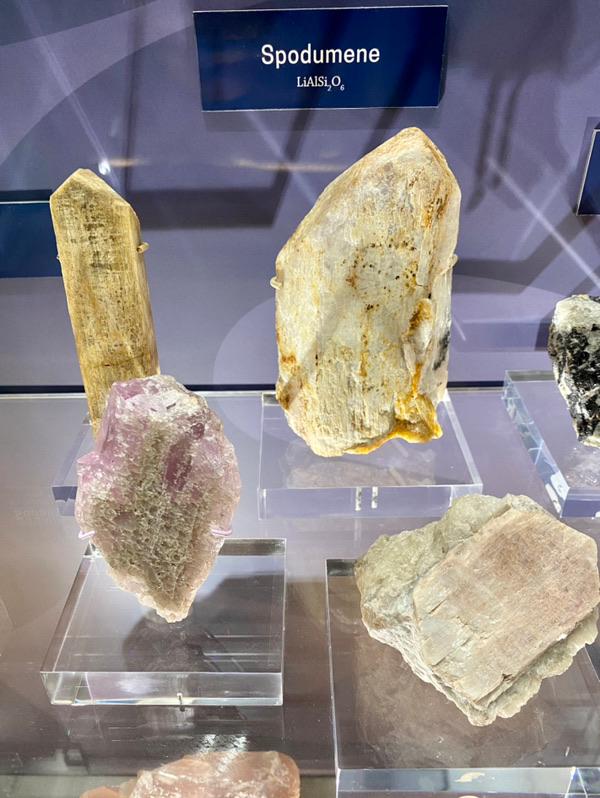Maine looks set to amend its mining laws to exempt some metals from the state’s strict metallic mining regulations, provided developers can prove they won’t pollute nearby watersheds or cause other environmental harms in the process.
“I was incredibly hesitant to suggest any changes to the mining act,” said Department of Environmental Protection Commissioner Melanie Loyzim during the most recent work session on the bill that advanced to the House this week, LD 1363. But, she continued, “it became obvious what we had been thinking about all those years when we worked on the rule that we just hadn’t been thinking big picture enough.”
It will be at least a year, likely longer, before the changes take effect, and there will be ample opportunity for public input before that happens, said Loyzim. Because the changes are considered “major substantive,” DEP will have to go through an extensive rulemaking process, which includes a public hearing and months of information gathering.
The changes will have to go before the Board of Environmental Protection, a citizen group that oversees the DEP, and come back to lawmakers before they’re finalized.
If everything goes smoothly, the final rule could be in place by next fall, said Loyzim, although she noted there are “several ifs in there, and lots of caveats… this is a proposal where there’s a fair amount of uncertainty, and it could go quite a bit longer.”
The creation of the Metallic Mineral Mining Act took five years to go through a similar process, although, as Loyzim pointed out, that was “a full reboot” of the rule.
The changes to the mining act were prompted by news, broken by The Maine Monitor in 2021, of the discovery of a world-class deposit of spodumene, a crystal that contains the metal lithium, highly sought-after for batteries, touch screens and other devices.
The mineral was found deep in the woods of the western Maine town of Newry by Mary and Gary Freeman, experienced “rock hounds” who have spent decades looking for tourmaline, beryl and other gemstones in an area that is internationally famous for such deposits.
The rulemaking process will be underway as there is increasing interest in the state’s mineral resources, and increasing pushback against the companies that want to dig them out of the ground.
Just this week, residents in the midcoast town of Union voted overwhelmingly in favor of pausing any metal mining or exploration to give local officials time to review regulations. The vote came after Canada-based Exiro Minerals expressed interest in looking for metals near Crawford Pond in Warren, whose residents also enacted a moratorium on mining this spring.
A similar moratorium has been proposed in the nearby town of Hope. The Washington County town of Pembroke, which was also the subject of interest by a Canadian mining company, banned industrial metal mining altogether last year.
Maine has not had an active metal mine for decades. No company has even applied for a permit to mine metals under the new law, which passed in 2017.
Lawmakers shared the concerns of their constituents regarding metal mining. “It’s just keeping me awake, fiddling with this law that took so long,” said Rep. Vicki Doudera. “What are the unintended consequences for our state?”
Commissioner Loyzim assured lawmakers that the rule changes would protect the environment, and that entities would only be exempt from the mining act if they could prove, through extensive testing, that the waste they would generate would be inert.

It’s likely that the spodumene deposit in Newry would qualify for the exemption, said Loyzim. The Freemans would still have to prove it, however, and would still be regulated — just under the state’s quarrying rules, which are much less strict.
The Freemans have already spent five years in discussions with the DEP, said Mary, and have already — with permission from state officials — removed roughly 700 tons of spodumene from the site. They have also done water quality testing and have core samples available.
“The water quality is very good,” said Freeman, noting that there is a brook in the area known as Spodumene Brook, named by a state geologist who saw the crystals at the bottom. “We have a lot of exposure of this material to water.”
Lawmakers were not receptive, however, to the Freemans’ request for a pilot project that would allow them to mine the deposit sooner, saying they wanted to proceed slowly.
The debate over what to do about spodumene also raised a host of questions about quarrying, an industry with a long history in Maine. While metals can’t be mined in open pits larger than 3 acres, the state has no limit on the size of open pits for quarries, which concerned some lawmakers.
Others, worried about habitat fragmentation, wanted to know if there was a way to prevent the “swiss cheese effect,” as Loyzim called it, of multiple pits spread across rather than a single large pit. Preventing that “would be complicated,” said the Commissioner.
Quarries are also hardly the only threat to habitat, pointed out Natural Resources Council of Maine staff scientist Nick Bennett, and often revegetate quite nicely, pointing to the long Maine tradition of swimming in old granite quarries.
“We have allowed all sorts of uses that have impacts on habitat and species — we allow roads. We have a lot more acreage of roads, I would guess, than we have of these new types of quarries.”
Lawmakers also advocated for ensuring the state benefits financially from the new metal quarries, either through permitting fees or excise taxes or both. A quarry application costs $250; initial processing fees for a mining permit are $500,000, plus at least $20,000 each year for a permit.
“This is a different animal,” said Rep. Doudera. “Our start should be benefiting a little from it.”
Commissioner Loyzim said that DEP staff were committed to making “really careful fixes” to the law. “I don’t want to do this again.”







